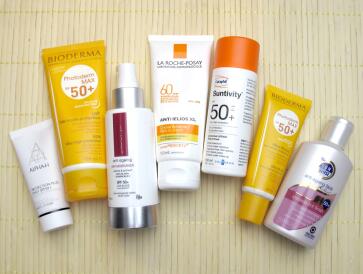The application and safety risk of 2,2',4,4'-Tetrahydroxybenzophenone
Application of BZP-2
2,2',4,4'-Tetrahydroxybenzophenone (BZP-2) is water-soluble and light-yellow powder (figure 1). BZP-2 is widely used in perfumes to prevent their degradation due to light. BZP-2 is a UV-absorber that helps protect against product degradation because of UV-light exposure and it is widely used in sunscreens and in cosmetics (figure 2), such as: anti-aging” creams and hair sprays and shampoos, paints and plastics. It can also mask odor associated with a formulation’s composition. In addition, the hypolipemiant drug fenofibrate is also a substituted benzophenone.

Figure 1 The application of BZP-2 in sunscreen products
Potential Risk
Although 2,2',4,4'-Tetrahydroxybenzophenone is used as a UV-blocker in cosmetics, plastics and automotive car products, its safety issue still should be noted. Such as workers that use BZP-2 may breathe in dust or have direct skin contact and the general population may be exposed by dermal contact with products containing this compound. 2,2',4,4'-Tetrahydroxybenzophenone(BZP-2) released to air will be in or on particles that eventually fall to the ground and it is expected to be susceptible to degradation by sunlight. It will not move into the air from moist soil and water surfaces. It is expected to move slowly through soil and is not expected to build up in fish. Skin allergic reaction has been reported in some people using sunscreens or cosmetics containing this compound. 2,2',4,4'-Tetrahydroxybenzophenone(BZP-2) is a member of a group of chemicals known as endocrine disruptors, which may alter the function and/or development of the reproductive system. Limited evidence indicates that exposure to benzophenone UV-absorbing chemicals, including BZP-2, is associated with an altered ratio of males to females at birth (increased females). Altered endocrine function may also lead to altered thyroid function. No human data are available, but thyroid cells exposed to 2,2',4,4'-Tetrahydroxybenzophenone(BZP-2) in a laboratory produce lower levels of thyroid hormones. Increased uterine weights and changes in estrogen were observed in laboratory animals exposed to a high oral dose of 2,2',4,4'-Tetrahydroxybenzophenone(BZP-2). Impaired development of male genitalia was observed in offspring of laboratory animals exposed to low oral doses during pregnancy. Currently, data on the potential for 2,2',4,4'-Tetrahydroxybenzophenone(BZP-2) to cause cancer in laboratory animals were not available, and the potential for BZP-2 to cause cancer in humans has not been assessed by the U.S. EPA IRIS program, or the U.S. National Toxicology Program.
References
[1] https://www.chemicalbook.com/CASEN_131-55-5.htm
[2]https://pubchem.ncbi.nlm.nih.gov/compound/2_2_4_4_Tetrahydroxybenzophenone#section=Overview
You may like
Related articles And Qustion
See also
Lastest Price from 2,2',4,4'-Tetrahydroxybenzophenone manufacturers

US $0.00-0.00/KG2025-07-05
- CAS:
- 131-55-5
- Min. Order:
- 1KG
- Purity:
- 99.0%
- Supply Ability:
- 10000KGS

US $0.00-0.00/G2025-06-11
- CAS:
- 131-55-5
- Min. Order:
- 0.1G
- Purity:
- 99.99%
- Supply Ability:
- 2000000T




